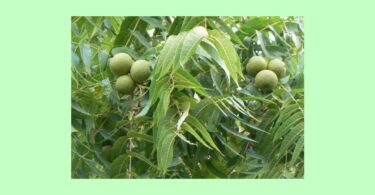Radko Tichavsky is a Czech born Mexican Agrohomeopath. He is a co-founder and director of Instituto Comenius in Mexico and author of Handbook of Agrohomeopathy, 2007 (Spanish) and Homeopathy for Plants, 2009 (Spanish), Organon de la Holohomeopatía and creator and teacher of Holohomeopathy.
He is now offering a one-semester virtual course in Holohomeopathy (in English). You can learn how to define and analyze holons and how to repertorize the specific homeopathic treatment beyond just disease or pest names. You can find out more here: www.icomenius.edu.mx
Many readers asked about Radko Tichavsky’s books. Below is a photo of them. They are available Spanish, Italian and Portuguese. For ordering or information: [email protected]

Hello Mr. Tichavsky,
The problem is scale on an olive tree. Climate is coastal, warm temperate
Can’t wait to hear the homeopathic solution!

Thank you kindly
Angela Nicholson
Radko Tichavsky:
Dear Angela,
The scale in the picture is not well distinguishable. These are probably nymphae of Saissetia oleae or Aonidiella aurantii. As a rule, all scales appear on olive trees as a consequence of too much nitrogen fertilization (for example in olive groves where cows or sheep are allowed to graze, or when nitrogen is applied in the form of artificial fertilizers).
The scales attach themselves to the leaves, trunk or fruit and feed on the tree’s sap, but also inject a kind of saliva that is toxic to the tree, and attracts ants for their defense, so the ant control is important to control the scales.
Nymphae are susceptible to desiccation and depend for their survival on access to air. Applications of Natrum muriaticum 3 JT with Helianthus annuus oil as an adjuvant (2 ml for every 20 liters of homeopathic preparation) at the end of summer help control scales and should be accompanied with Cinnamomum verum (Cinnamon) at 3 JT potency in the area near the trees. In case of stubborn scales, Ricinus communis at potency 12 JT (made from the seeds of the plant) can be applied with Helianthus annnus oil as an adjuvant.
Greetings Dr. Tichavsky,
When I harvested my garlic, I found these little things attached. Any idea what they are? Are they edible?

Thank you,
Charlotte
Radko Tichavsky:
Dear Charlotte,
The tubers look like those of Allium sphaerocephalon popularly known as Japanese garlic or Chinese garlic, it is possible that the seeds were accidentally introduced at the time of planting, but it may also be common garlic tubers with imperfect development.
However, many plant roots resemble each other and it is not possible to state the identity of a plant with certainty only by the morphology of the tubers in a photo. Even if the tubers smell like garlic, as a precautionary principle, it is better not to eat them. You can reseed them in the soil and wait for the whole plant to develop with all its leaves and flowers and in this way, you can confirm the taxonomy of the “mystery” tubers with certainty and determine if they are edible.
Dear Dr. Tichavsky,
I am growing Calendula but all of the sudden I got these bugs on the flowers. They are loving the Calendula but they are destroying my flowers! They are quite aggressive. Is there any natural remedy that I can spray on for them to leave my babies alone? I believe it is called Sepulcralis but I might be wrong.

Thank you
Melissa
Radko Tichavsky:
Hi Melissa,
The popularly called Spangled flower beetle, or Bumble flower beetle, day-flying beetle Euphoria sepulcralis frequently damages flowers of many herbaceous plants and trees, corn, roses, calendula, milkweed, dogwood, sumac, yarrow, daisies, goldenrod, flowers of blooming fruit trees, flowers of apple, orange, and mango. It flies from May to October.
The biochemical substances that attract this beetle are eugenol and geraniol, (both present for example in the essential oil of Ocimum basilicum). You can elaborate traps (for example of old plastic bottles, where you place a few drops of the essential oil of basil to attract the adults together with Sansevieria trifasciata 3 JT or latex of some silver of the family Euphorbiaceae to the potency 3 JT.
In the traps, and also outside them you can apply live bionosode of Metarhizium anisoplae at 3 JT potency. It is an entomopathogenic fungus that controls both larvae and adults and once applied it will settle in the holon and remain there.
Hello Dr. Tichavsky,
I need some advice regarding the taming of wisteria vine. I’ve got about 25+ years of vine that’s taking over all of the old lilacs and hydrangeas in my gardens at my New Haven Connecticut home. I know I need to dig, but hoping for some experienced help. The summers are warm and humid, the winters are very cold and snowy, and it is partly cloudy year round. Over the course of the year, the temperature typically varies from 23°F to 82°F and is rarely below 9°F or above 89°F. Mailing code 06502.

Thanks!
Helen
Radko Tichavsky:
Hello Helen,
The Wisteria floribunda plant infestation is a major problem in much of the USA. The plant is introduced as an ornamental species and can easily get out of control. The vines twine tightly around the trunks of host trees, cutting through the bark and can eventually damage or kill the trees.
Wisteria creates gaps in the canopy, which allows more sunlight to reach the ground, stimulating the growth of more new Wisterias. The plant has a wide range of adaptability and is found as an invasive species in 80% of the U.S.
The control method is to apply Larrea tridentata 3 JT to infested sites after mechanical removal of the roots. Wisteria floribunda contains as endophyte the bacterium Pantoea dispersa (gammaproteobacteria) which produces within the plant indoleacetic acid (AIA), a growth hormone, which gives Wisteria its pronounced vitality.
Part of the strategy to combat Wisteria is to decrease the presence of the AIA-producing bacteria in the plant by application of live brewer’s yeast bionosode at 3 JT potency, or with the application of colloidal silver at 3 JT potency to the root system. This will decrease the vitality of the Wisteria and make it more prone to pathogen attack and less invasive.
Greetings Dr. Tichavsky,
I plant cabbages by themselves each year, but I’m wondering if they would grow better with companion plants. What plants could I use as companions? How close should I plant them? I’m in Decorah, Iowa (U.S.) Zipcode 52101. The highest average temperature in Decorah is 26°C in July and the lowest is -6°C in January. We get 36 inches of rain, on average, per year and 40 inches of snow per year. On average, there are 192 sunny days per year in Decorah.
Thank you
Jonathan
Radko Tichavsky:
Hi Jonathan,
Plants like chamomile, hyssop, thyme, rosemary, dill, peppermint, spearmint, sage, oregano, Yarrow, marigolds, onions, beets, celery, wormwood, chives, summer savory, coriander, tansy, yarrow, dill, chervil, geranium, rue, sage, and oregano are all very beneficial companion plants to cabbage.
However, polyculture management generally presents a problem at harvest time and this is where holohomeopathic applications present an advantage. You do not need to intercrop the above mentioned companion plants to cabbage if you make applications of Rosmarinus officinalis, Thymus officinalis or Origanum vulgaris at potency 6 JT to keep Plutella xylostella and other common cabbage pests under control.
However, it is very important not to plant the cabbage crop in the same place and to establish a crop rotation to properly modify the soil microbiota and nutrient configuration. Proper crop rotation can significantly reduce the number of parasites and diseases. It allows you to preserve all the useful properties of the soil and increase the future crop, so it is important to know what crops to plant after the cabbage. After cabbage, you can plant in the same place cucumbers or tomatoes for example.
Dear Dr. Tichavsky,
What is the best way to preserve and foster the growth of the natural mycorrhizae fungi in the soil. What farming methods and fertilizers should I use? I mostly grow potatoes, tomatoes and pumpkins. We live in Andalusia, Spain. The climate is a temperate Mediterranean type with hot and dry summers and mild winters with irregular rains. Zipcode 29006.
Thank you
Daniela Perez
Radko Tichavsky:
Hello Daniela,
One of the conditions for maintaining mycorhizae is to maintain soil cover and perform minimum soil tillage. There are different types of mycorhizae: ectomycorrhizae and vascular arbuscular mycorhizae, each with its own beneficial functions such as increasing plant resistance to salinity and dryness and facilitating access to nutrients such as phosphorus and increasing crop resilience.
Each beneficial fungus must be established on the plant from seed and must be inoculated together with the native bacteria of your holon. The best mycorhizae are found in your own holon (not on the internet or in farm supply stores). We usually look for them in places with little human intervention called attractors, close to the cultivation area.
From the attractors we extract the samples, prepare them in the form of live bionosodes (homeopathic preparations with clusters of live microorganisms) and apply them on the seeds (without fungicide treatment).
We find them in plants with metabolic similarity, which belong to different botanical families, under the principle that in two plants with metabolic similarity there are also microorganisms with the same degree of similarity and compatibility.
Plant nutrition in holohomeopathic crops is not based on inputs added to the holon (neither organic nor chemical), but on the collaboration of nitrogen-fixing or potassium or phosphorus-available bacteria that come into contact with the root endings, attracted by polysaccharides, substances produced by the plant itself.
Once the bacteria enter the root system, the plant produces acids that dissolve its cell wall and the plant is nourished from within. It is impossible to describe details of the holohomeopathic method in a short column, but if you want to learn, we offer a diploma in Holohomeopathy online (www.icomenius.edu.mx) where in six months and in Spanish you learn the method and we accompany you with practical advice on your crops to achieve a successful holohomeopathic production.
Currently students from Mexico, Brazil, Spain, Italy, France, United States, India and Croatia are participating.
* Editor’s Note: JT (Jenichen/Tichavsky) potency is centesimal dilution followed by 500 succussions or five hundred continuous turns with a wooden stick to the right and 500 turns to the left (if handling larger volume). The JT potency frequently has a better reaction in plants and it is very important in preparation of live bionosodes.







Wow….. Thank you so much for imparting your knowledge about my humble olive tree. I shall do as instructed and let you know how she goes!
Warmly
Angela